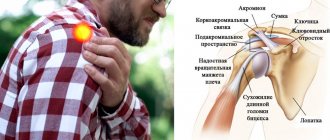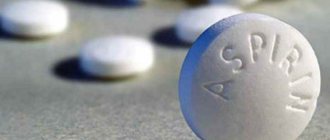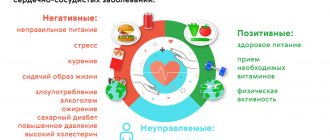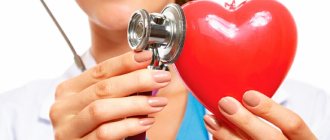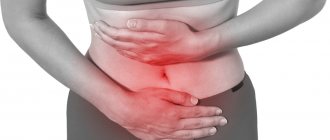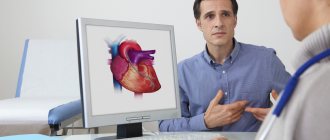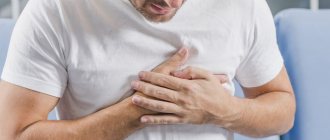Make an appointment by phone: +7 (343) 355-56-57
+7
- About the disease
- Cost of services
- Sign up
- About the disease
- Prices
- Sign up
Chest pain is a serious symptom and a reason to see a doctor.
Localization of pain in the left half of the chest and in the left breast is often associated with pathology of the cardiovascular system, although it may be due to a number of other reasons.
Causes of pain in the left chest:
1. Diseases of the cardiovascular system:
- cardiac ischemia
- inflammatory heart diseases (myocarditis, pericarditis)
- dissecting aortic aneurysm
2. Respiratory diseases:
- pneumonia
- pneumothorax
3. Diseases of the gastrointestinal tract:
- stomach ulcer
- gastroesophageal reflux disease (GERD)
- inflammation, trauma, tumors of the esophagus, stomach
- acute pancreatitis
- sliding hiatal hernia
4. Diseases of the musculoskeletal system:
- inflammatory diseases of the spine and ribs
- spinal and rib injuries
- degenerative diseases of the spine (osteochondrosis, spondylosis)
5. Infections of the soft tissues of the chest - herpes zoster
6. Diseases of the breast
CLINICAL depends on the cause of chest pain.
Coronary heart disease
can manifest itself as pain in the chest of a pressing, burning nature, in the left half of the chest, which can radiate to the left arm and/or both arms, throat, and lower jaw. Usually occurs during physical activity and stops when it is completed, or after taking nitroglycerin or administering analgesics. Such pain is accompanied by shortness of breath, weakness, sweating, and fear of death.
For inflammatory heart diseases
pain in the left chest occurs after an acute respiratory viral infection and is varied in nature (aching, stabbing, pressing, cutting). They are associated with body position and breathing, last for many hours, are in no way related to physical activity and disappear while taking anti-inflammatory drugs.
Dissecting aortic aneurysm
characterized by sudden, sharp, dagger-like pain of a diffuse nature in the chest, occurring after a sharp rise in blood pressure, intense jerking load (heavy lifting), accompanied by weakness, sweating, loss of consciousness, and a drop in blood pressure.
Pneumonia (pneumonia)
accompanied by cough, increased body temperature, stabbing, cutting, aching pain associated with coughing and breathing.
Against the background of tuberculosis
, chronic obstructive pulmonary disease, bronchiectasis, bullae - large bubbles - can form in the lungs. With a sharp cough or injury to the chest, they burst, air from them escapes into the chest and causes displacement of the internal organs located in it. This condition is called “pneumothorax” and is manifested by sharp, high-intensity chest pain, shortness of breath, a drop in blood pressure and even loss of consciousness.
Any disease of the gastrointestinal tract
may be accompanied by chest pain, especially in the left half. The fact is that all organs of the chest and abdominal cavity are closely connected to each other through innervation. And very often with gastroenterological disease there is “referred” pain. That is, the “epicenter” of the disease is in the abdominal cavity, and pain is felt in the chest.
The pain syndrome itself in this case is varied (stabbing, aching, pressing, cutting, bursting pain, etc.), and is not associated with physical activity. But it is associated with eating or feeling hungry, usually for many hours. It often goes away after eating or taking antispasmodics, and may be accompanied by nausea, vomiting, weakness, and the urge to defecate.
For pathology of the musculoskeletal system
(osteochondrosis, spondylosis) pain in the left chest is often local (point-like), although often diffuse, mostly sharp, piercing, sharp, associated with breathing and body position. It is not associated with physical activity and goes away on its own, or when changing body position, when taking anti-inflammatory drugs (Nise, diclofenac, ibuprofen).
Chest pain following injury
, may be associated with post-traumatic inflammation or fracture. The characteristics of this pain syndrome are similar to those described for osteochondrosis and spondylosis.
For herpes zoster
pain in the chest is burning, intense, sometimes unbearable, lasts for many hours, and is difficult to relieve with analgesics. On the second or third day of the pain syndrome, rashes appear on the chest. They resemble blisters, cause unbearable itching and go away after a while.
Breast diseases
(mastopathy, mastitis, oncological pathology) can also be accompanied by pain in the left half of the chest and under it. The pain is also absolutely varied, but more often it is local (small in area), sharp, stabbing, and often just discomfort in the breast area. In this case, the mammary gland itself may become engorged (increase in volume); it is possible to detect a focal compaction in it, often dense and painful.
Pseudocardialgia or false pain in the heart with osteochondrosis
Cardialgia refers to all pain in the heart area until the exact disease causing it is determined. Pseudocardialgia is commonly called pain in the heart, which can have a variety of causes, and these are not heart diseases. Diseases that are accompanied by painful sensations in the heart area may include: neuralgia, neuropsychiatric disorders, vegetative-vascular dystonia, etc.
One of the diseases that most often causes false pain in the heart (pseudocardialgia) is osteochondrosis of the cervical or thoracic spine, as well as a herniated intervertebral disc. The symptoms of pseudocardialgia completely imitate pain in cardiovascular pathologies, but unlike them, they calm down when moving and intensify at rest (with real cardialgia, the opposite is true).
Osteochondrosis is a degenerative process in the intervertebral discs that affects the cervical and thoracic spine. As a result, the spinal nerves surrounding the chest are compressed and cause pain, which can be localized, including in the heart area. Hypertonicity of those muscles that are controlled by these nerves (pectoralis minor and major, intercostal muscles on the left side) also leads to increased pain. Cervical and thoracic osteochondrosis can also cause blockages of the costovertebral joints, causing pain to the patient.
The occurrence of false pain in the heart due to osteochondrosis or hernia is associated with certain movements or positions of the head and left arm (pulling to the side or moving behind the back provokes overstrain of the cervicothoracic nerve roots), at night they may appear for the first time or significantly intensify. The pain is provoked by physical activity, deep breathing, coughing or sneezing, hypothermia, and sudden movements.
There may also be an increase or decrease in reflexes in the hand, an increase or decrease in its sensitivity, tingling or goosebumps. Before heart pain occurs, a patient with osteochondrosis may experience pain in the back, along the spine, between the shoulder blades.
You can distinguish pseudocardialgia from cardiovascular pathology using an ECG (an electrocardiogram simply will not show the presence of heart disease). The diagnosis is usually confirmed by x-ray and computed tomography scan of the spinal column
After diagnosing false pain in a patient due to osteochondrosis or other pathologies of the spine, treatment by a vertebrologist is necessary. Treatment of pseudocardialgia primarily involves the treatment of osteochondrosis. Elimination of pain is ensured by taking analgesics, and manifestations of osteochondrosis are reduced by physiotherapeutic procedures.
One of the effective means is gentle manual therapy in the form of massage aimed at treating osteochondrosis, removing blockades from the spinal-costal joints, reducing the tone of the pectoral and intercostal muscles.
The massage is complemented by physiotherapy - laser treatment, phonophoresis, electrophoresis, etc. Author: K.M.N., Academician of the Russian Academy of Medical Sciences M.A. Bobyr
Prevention
Prevention of chest pain syndrome consists of timely contacting a doctor for the first symptoms of the disease, a healthy lifestyle and following all the recommendations of the attending physician. FEATURES OF THE COURSE OF CHEST PAIN SYNDROME
in age groups is that in older people the pain syndrome is usually less pronounced. It can be masked by shortness of breath and weakness, dizziness, and its most common cause is ischemic heart disease.
In younger patients, the list of main causes includes traumatic and inflammatory diseases of the chest, lungs, and gastroenterological pathology.
There are no differences between individuals of both sexes in the characteristics of chest pain. In pregnant women, the clinical picture of chest pain differs little from that in other individuals.
Our clinic at the New Hospital has all the necessary examinations and specialists to conduct a full examination of a patient with chest pain
Causes of pain in the heart area
If the pain in the heart radiates to the shoulder blade, then it is worth determining the causes of the development of the disease. Malaise is influenced by many factors. Among them:
- Musculoskeletal disorders. Pain in the heart radiates to the shoulder blade due to disorders of the musculoskeletal system. The symptom is associated with osteochondrosis. Back pain spreads to the shoulder blades and the cardiac system. We are talking about osteochondrosis of the spine and cervical region.
- Injuries to the shoulder blade or ribs. When joints and muscles are damaged, the patient feels pain in the heart area. She has a dull, pulling character. It is worth getting rid of unpleasant symptoms with the help of painkillers.
- Hernia in the thoracic region. A hernia in the thoracic region can cause pain syndromes in the human body in the area of the heart and shoulder blades.
- Myositis.
- Intercostal neuralgia.
- Cardiac ischemia. Coronary heart disease develops with frequent stress, nervous breakdowns, and emotional stress. It can also be caused by physical activity. Requires special attention from specialists.
- Angina pectoris. With angina pectoris, the pain intensifies when breathing and sneezing, and has a cutting, acute nature. Most often, painkillers are required.
- Congenital heart defect. With congenital heart disease, the patient regularly feels pain in the heart area and in the shoulder blades.
- Gastrointestinal problems. When there are disorders of the gastrointestinal tract, accompanying symptoms appear in the body. The main complaints are diarrhea or constipation, nausea and vomiting, and loss of strength. The patient complains that pain in the heart radiates to the left shoulder blade.
- Duodenal ulcer. During the inflammatory process of the duodenum, the patient experiences an acute cutting pain in the heart area, which radiates under the left shoulder blade. The systems of the human body are connected, so there is a lot of stress on the heart.
- Pancreatitis.
- Pneumonia, pleurisy, bronchitis, bronchial asthma. In diseases of the respiratory tract, the cardiovascular system is often affected. The chest hurts a lot. The pain does not go away without taking medication.
- Muscle tension. People who constantly work physically regularly experience muscle pain. This is due to heavy loads on the body during the working day.
- Myocardial infarction. Accompanied by panic, nausea, loss of strength, abnormal blood pressure and pulse. Possible depression and fainting. The patient develops cold sweat and has difficulty breathing. In this case, you should definitely call an ambulance.
- Excess weight. With excess weight, an imbalance constantly occurs in the human body. Metabolism and blood circulation are impaired. Organs cannot function normally, blood stagnates in the veins. Pain in the heart radiates to the shoulder blade, as the cardiovascular system is heavily overloaded. To normalize the condition, you should visit a nutritionist and give up harmful foods.
- Neuralgia. The nervous and cardiovascular systems are interconnected. Therefore, violations in one of them entail problems in the subsequent system. If you have constant nervous breakdowns, you should attend physical therapy, spend more time in the fresh air, and lead a healthy lifestyle. Sports activities are necessary to relieve tension in all organs. In some cases, massage is attributed.
- Intoxication of the body. When the body is intoxicated with narcotic substances or alcoholic beverages, pain in the heart radiates to the shoulder blade. This condition is extremely dangerous to health. It is worth performing gastric lavage and normalizing metabolism with the help of special medications.
- Wrong daily routine. If your daily routine is incorrect, the pain in the heart area radiates under the shoulder blade. We are talking about disturbed sleep, poor diet and bad habits.
- Pregnancy. During pregnancy, changes occur in a woman's body. In connection with bearing a child, patients often have heart pain and radiate to the left shoulder blade. This is a normal state of the body that does not affect the life and health of a woman. However, if the pain continues for more than a week, then you should consult a doctor.
- Hormonal changes. With hormonal changes in the body, the patient experiences many unpleasant symptoms. Most often, pain in the heart area radiates to the shoulder blade.

